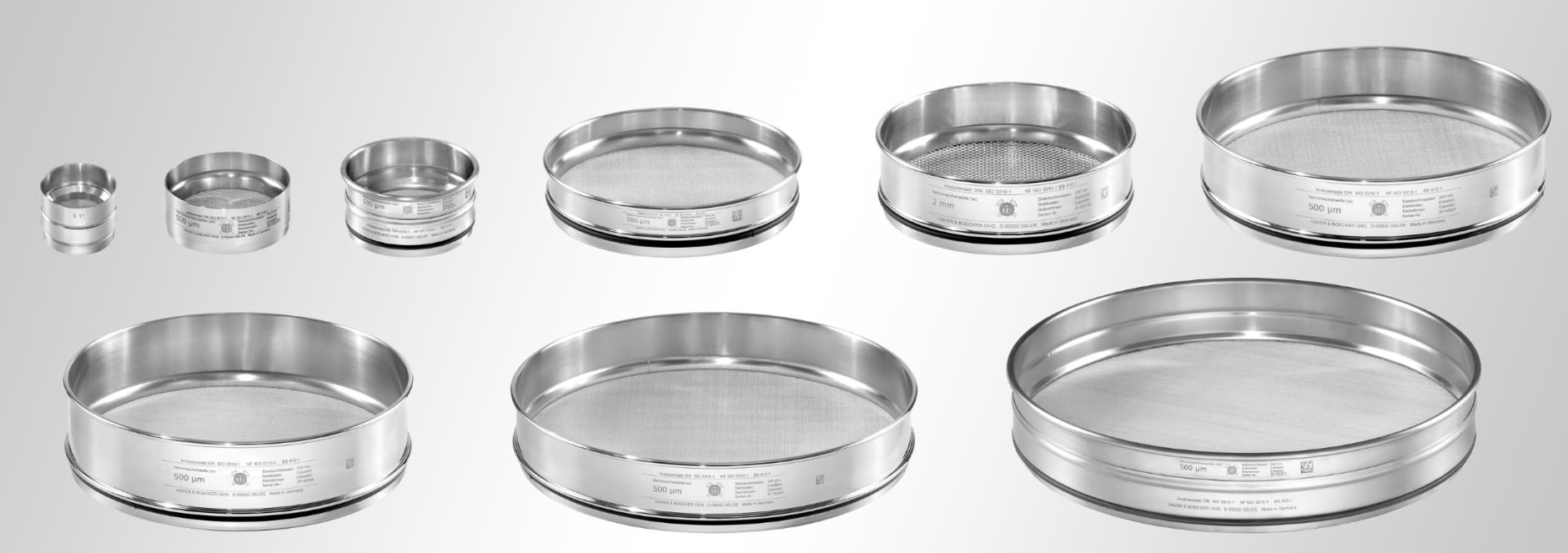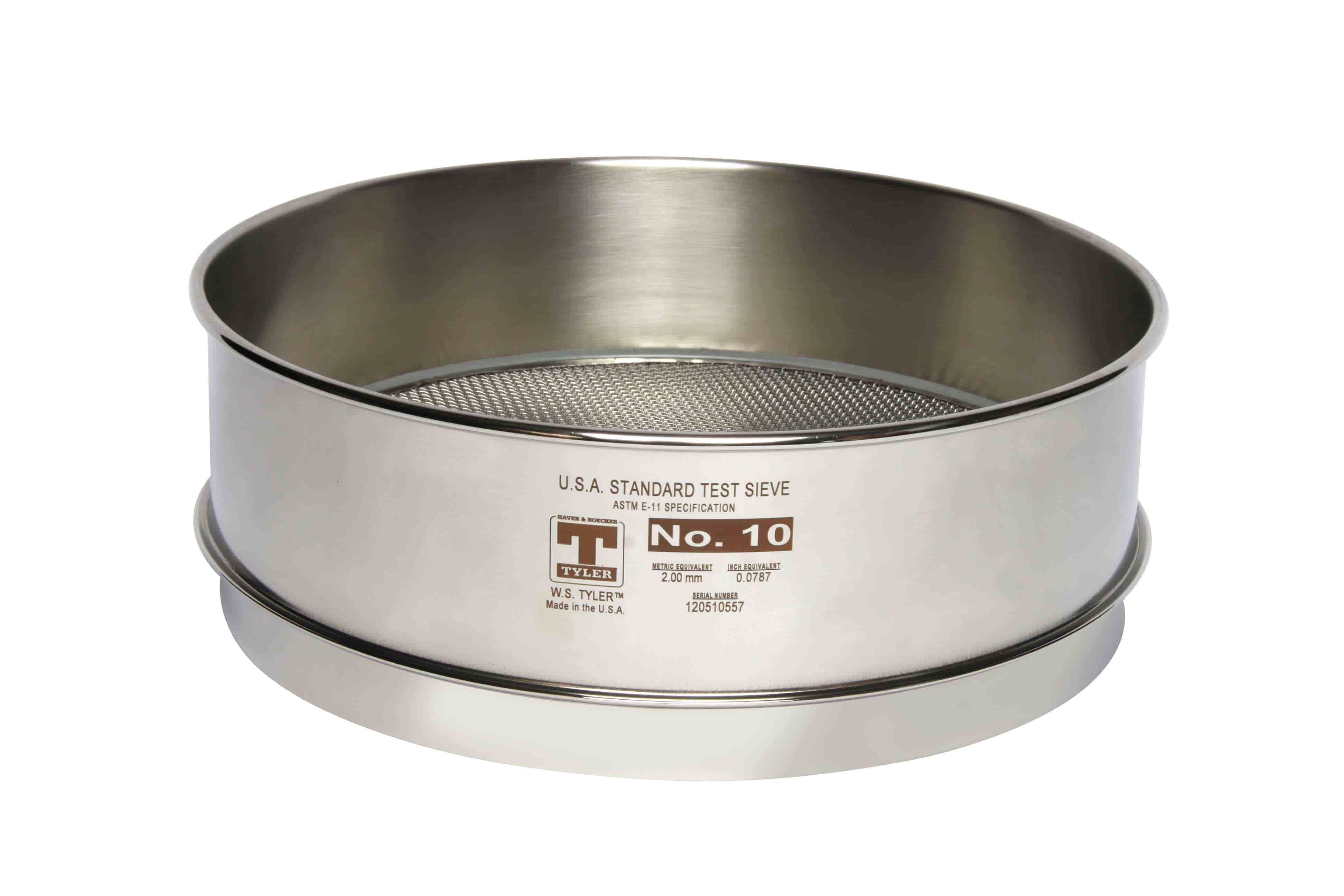Coffee Particle Size Analysis: What Test Sieves Should I Use?
When manufacturing coffee products, ensuring the coffee grounds consumers will purchase is uniform in size is essential to the coffee manufacturer’s quality control program. Doing so helps control customer satisfaction as uniform grounds create a consistent taste with each brew.
Here at W.S. Tyler, we understand the variating coffee ground not only creates inconsistent flavor but inconsistent brew times as well, further hurting your brand. To prevent these inconsistencies, coffee manufacturers should implement a reliable means of particle analysis, particularly test sieve analysis, into their quality control program.
But as dependable test sieves are the foundation of accurate and repeatable results, what test sieves should you be using?
W.S. Tyler has been a top manufacturer of test sieves for over 140 years and is here to provide insight into everything you need to know about designing the perfect stack of sieves.
With that, this article will cover:
- How to design the perfect sieve stack
- What sieve shaker you should use
- Some common sieving errors you must consider when designing a sieve stack
What Sieves Should I Use During My Coffee Production Process?
Designing the ideal sieve stack that lab technicians will use during coffee production is similar to how you’d design a sieve stack for most food production operations. When you’re starting a new product or developing a new product and trying to calculate your particle size distribution, knowing the general size of the bulk of your material is key.
So, for example, if the bulk of your material is 1 mm, you’d start with a 1 mm sieve, then go either one sieve coarser or two sieves coarser then on sieve finer or two sieves finer. This all depends on how much you want to look at the material split or how much material you think is close to that nominal size.

Explaining this further, if you know the bulk of your material is around a 50 mesh, your sieve stack could be a #40, a #45, a #50, a #60, a #70, and a collection pan. If you know there are very fine particles in your material, lab technicians can replace the #70 sieve with a #200 sieve.
Regardless of what your coffee production process looks like, the concept of design a sieve stack in step increments yields the most accurate distribution curve.
What Sieve Shaker Produces the Best Results When Testing Coffee?
Coffee has the tendency to become oily, especially when freshly ground. For this reason, the standard W.S. Tyler RX-29 Sieve Shaker will deliver the best result in most cases.
This is because the 8-inch sieves that are fitted into the RO-TAP are perfect for the fairly coarse particles that are tested during coffee production. Additionally, the mechanical tapping motion will break up any material stuck together from the residual oil that is present.
What Must Lab Techs Look Out for When Testing Coffee?
As with any test sieve analysis, you must ensure you are not overloading the sieve with material. Gathering the correct sample size requires you to consider the sieve diameter, as it controls the sample’s ability to find the mesh openings during the sieving process.
When working with coffee, you will want to ensure your material is dry. This is because, as stated above, coffee is often oily, which can cause agglomeration and skew your results.
You also want to do an end of sieve analysis. You’ll want to conduct several tests using the sample coffee grounds and the same sieve stack for coffee production.
If your results skew a little bit, you can adjust your sieving process by either taking a sieve out or placing additional sieves in the stack.
And when you are done conducting a test sieve analysis, all material that was tested should be properly disposed of.
Properly Maintain Your Sieves To Maintain Accurate Results
Test sieves are an integral element to the manufacturing of coffee products. When implemented correctly, they help to ensure coffee ground uniformity, which, in turn, guarantees consistent flavor and brew time.
But to yield accurate and repeatable sieve analysis results continuously, you must implement best maintenance practices to keep your sieves in pristine condition. This will help you preserve the accuracy and integrity of the sieve cloth while also prolonging the lifespan of your sieves.
Having been a prominent leader in the particle size analysis industry for over 140 years, W.S. Tyler strives to help customers perfect their test sieve analysis process.
For insight into how to properly maintain your test sieves, review the following article:
About Ronnie Brown
Ronnie is the Content Writer for W.S. Tyler and has four years of experience as a professional writer. He strives to expand his knowledge on all things particle analysis and woven wire mesh to leverage his exceptional writing and graphic design skills, creating a one-of-a-kind experience for customers.




